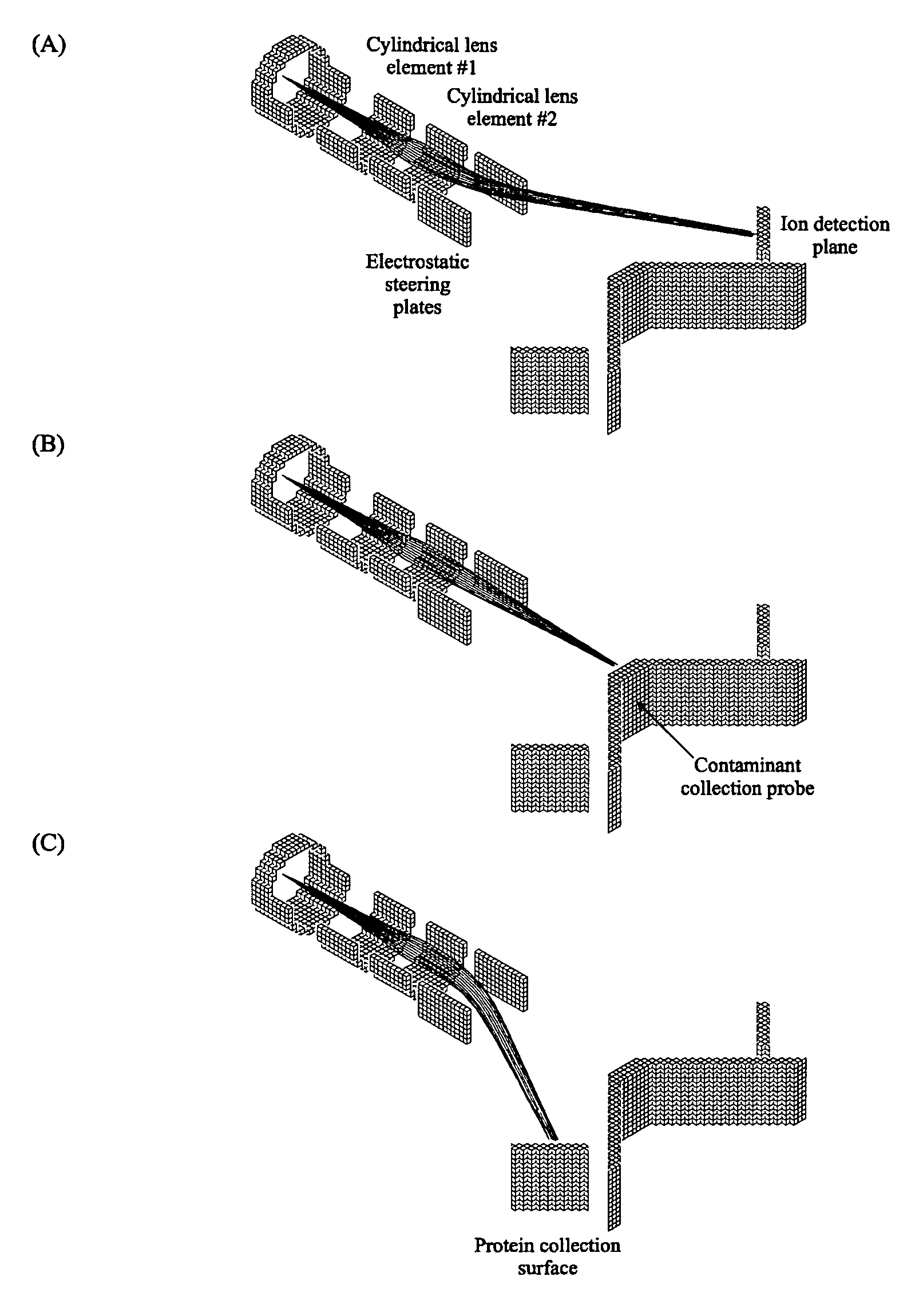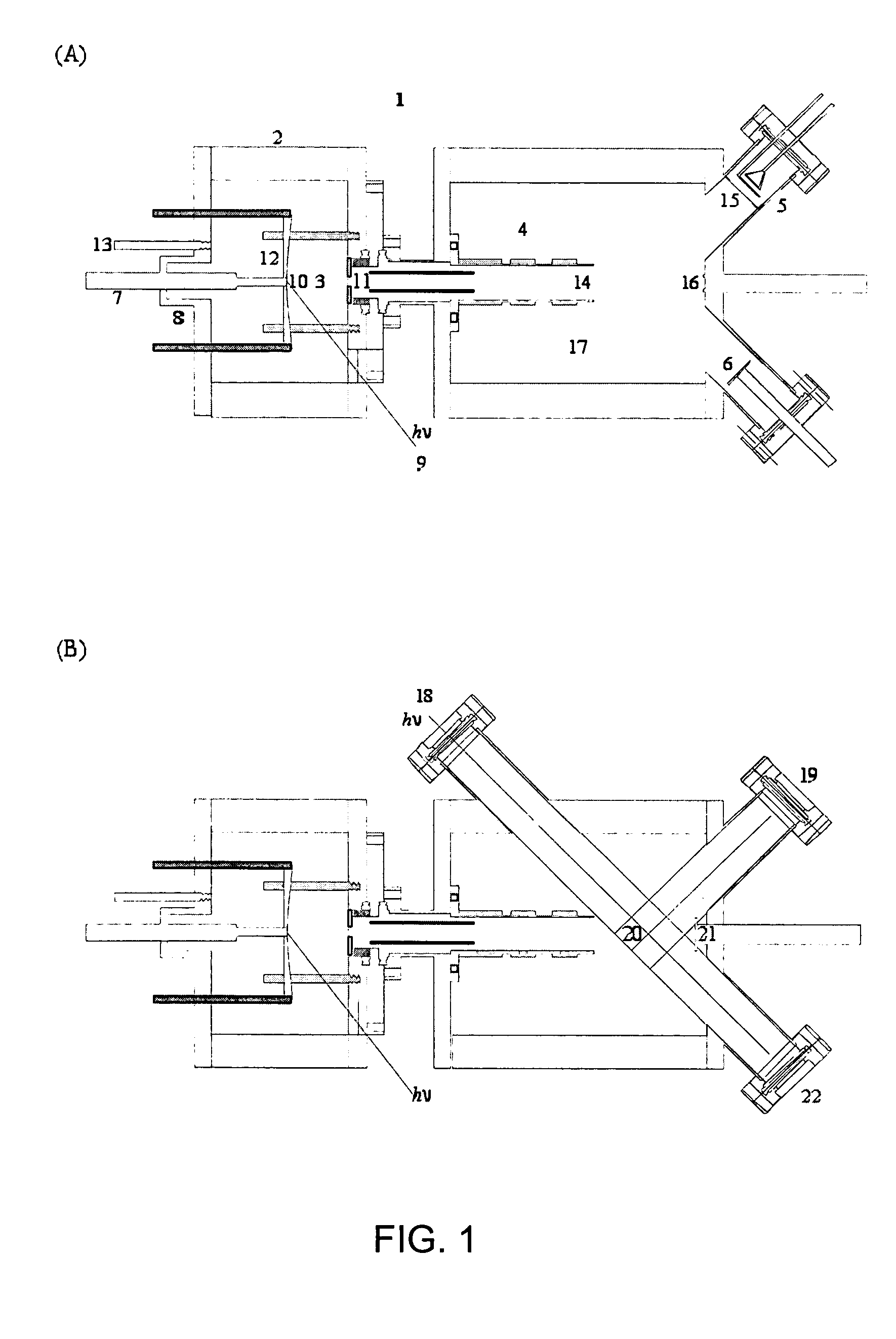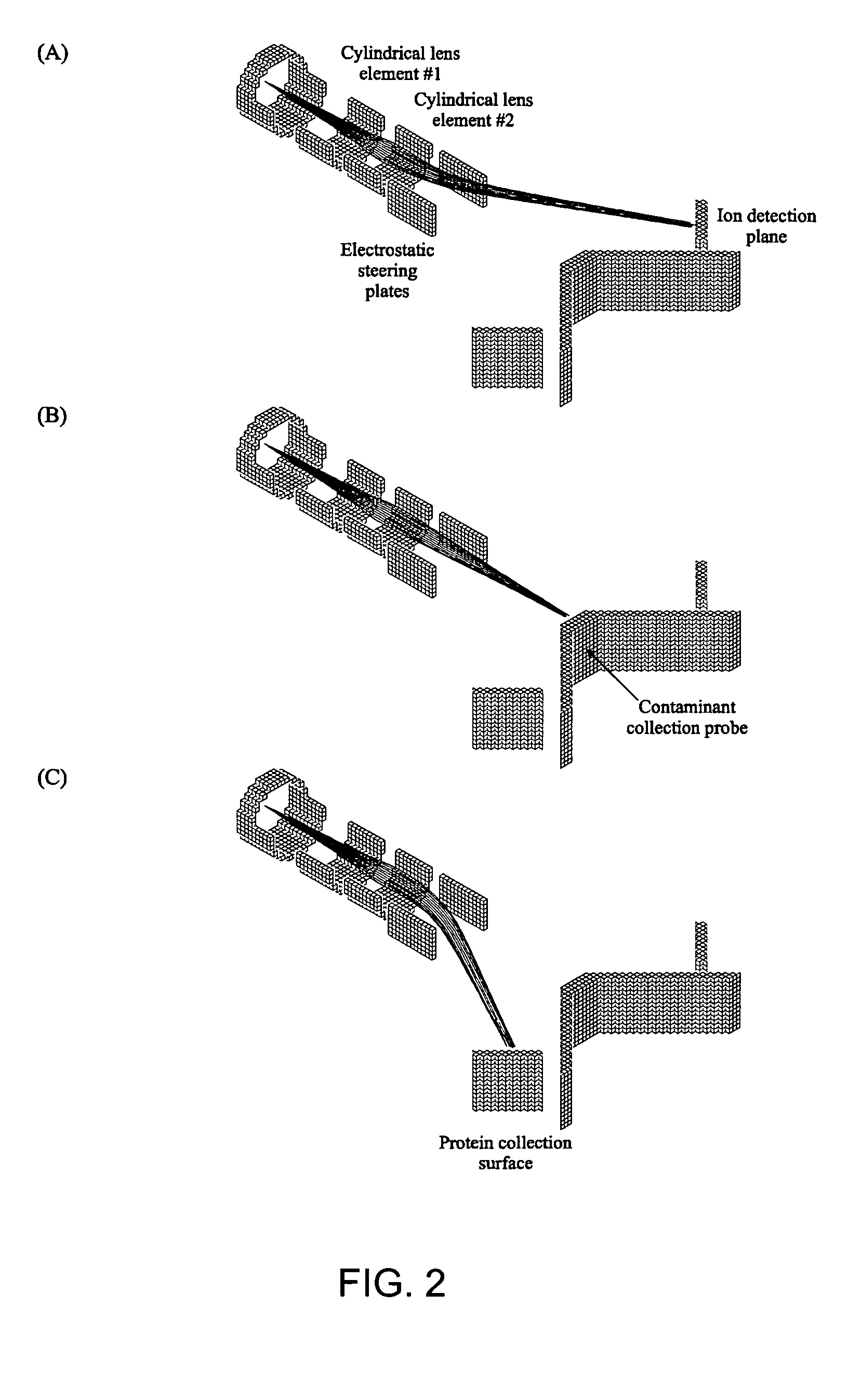Gas-phase purification of biomolecules by ion mobility for patterning microarrays and protein crystal growth
a technology of ion mobility and patterning microarrays, applied in the field of gas-phase separation of peptides and protein ions, can solve the problems of inefficient separation of protein isoforms (conformational or structural), inability to select protein structural conformations or protein modifications, and time-consuming methods
- Summary
- Abstract
- Description
- Claims
- Application Information
AI Technical Summary
Benefits of technology
Problems solved by technology
Method used
Image
Examples
Embodiment Construction
[0026]As used herein, “a” or “an” means one or more. The plural encompasses the singular and the singular encompasses the plural.
[0027]The invention includes an instrument and method for detecting and selectively depositing gas-phase ions onto a surface. The instrument comprises an ion source for generating ions, means for separating the generated ions wherein the means for separating is fluidly coupled to said ion source; means for selectively gating said ions based on their mobilities and means for directing said ions to a substrate, said means for selectively gating and said means for directing being fluidly coupled to said ion mobility drift cell; and, an ion detector fluidly coupled to said ion mobility drift cell.
[0028]FIG. 1A provides a schematic diagram of a device representing an exemplary embodiment of the present invention, instrument 1, is comprised of five major components: an ion mobility chamber 2, a source of ions 3 (such as peptide and proteins), a system of ion len...
PUM
 Login to View More
Login to View More Abstract
Description
Claims
Application Information
 Login to View More
Login to View More - Generate Ideas
- Intellectual Property
- Life Sciences
- Materials
- Tech Scout
- Unparalleled Data Quality
- Higher Quality Content
- 60% Fewer Hallucinations
Browse by: Latest US Patents, China's latest patents, Technical Efficacy Thesaurus, Application Domain, Technology Topic, Popular Technical Reports.
© 2025 PatSnap. All rights reserved.Legal|Privacy policy|Modern Slavery Act Transparency Statement|Sitemap|About US| Contact US: help@patsnap.com



